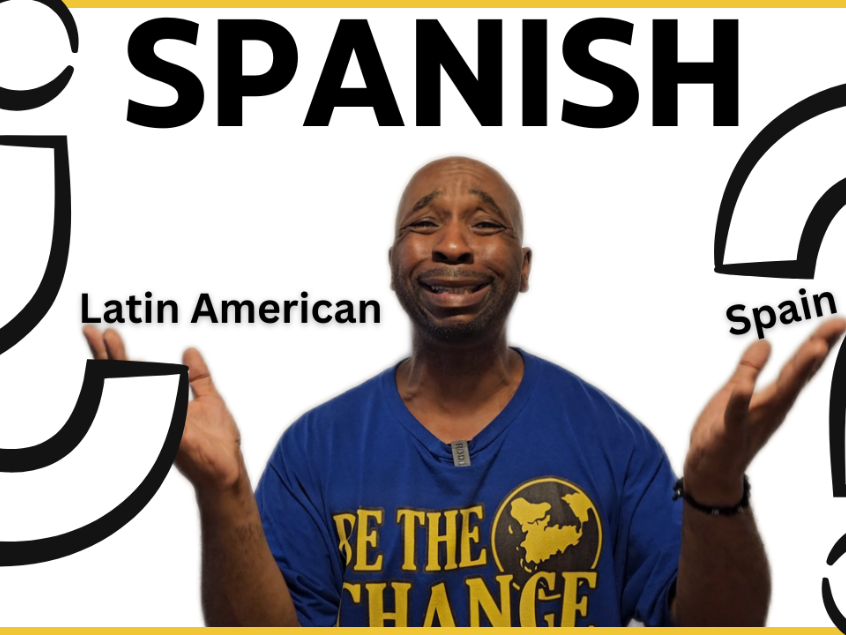Spanish Stress Rules: What Is Word Stress?
Spanish Stress Rules are something you need to understand – if you want to understand a crucial law of Spanish-learning land.
Ever wondered why some Spanish words have accent marks and others don’t? Or why the stress seems to land in different places — even when the words look similar? … If so, you’re not alone.
In this post, I’ll break down Spanish word stress in the simplest way possible. No complicated grammar terms. Just one main idea that will help you pronounce words more naturally.
Follow along with the video for best results:
Spanish Stress Rules Explained
Let’s start with the basics: what is word stress?
It’s simply the part of a word that you say with more emphasis. That part sounds a little louder or clearer than the rest.
Now, to understand stress, we need to talk about syllables. But don’t worry, this is super easy.
A syllable is basically a beat in the word. Every time your mouth opens to say a vowel sound, that’s usually a syllable.
Take the word banana, for example. It has three beats: ba–na–na.
In this word, we naturally stress the middle one: ba–NA–na.
Spanish works the same way. Every word has one beat that gets the main stress — and Spanish usually follows a very clear pattern.
The Main Rule: Stress the Second-to-Last Syllable
Here’s the golden rule:
In Spanish, the stress usually falls on the second-to-last syllable.
That’s your default. If you had to guess, you’d guess second-to-last -and you’d be right most of the time.
Let’s try some examples:
- Casa → CA-sa
- Amigos → a-MI-gos
- Hablan → HA-blan
In each case, the stress lands on the second-to-last syllable — just like the rule says.
When the Rule Is Broken
Of course, there are a few exceptions. But they’re easy to spot.
1. The Word Ends in a Different Consonant
If a word ends in a consonant other than n or s, the stress shifts to the last syllable.
Examples:
- Reloj → re-LOJ
- Ciudad → ciu-DAD
- Doctor → doc-TOR
These words don’t follow the usual pattern because they end in different consonants.
2. The Word Has an Accent Mark
When a word breaks the usual stress pattern, Spanish uses a written accent mark to show us exactly where the stress goes.
Let’s look at two examples:
- Inglés → ends in s, so stress should be on the second-to-last syllable: IN-gles.
But it’s actually pronounced in-GLÉS – so there’s an accent on the é to show that. - Teléfono → ends in a vowel, so we expect stress on fo (te-le-FO-no).
But instead, we stress the third-to-last syllable: te-LÉ-fo-no.
That’s a clear rule-breaker – so again, there’s an accent mark to show us where the stress really goes.
Quick Quiz: Can You Hear the Stress?
Let’s test what you’ve learned with a few examples. Try saying these words out loud and figuring out where the stress goes, and whether it follows the rule. (answers follow, but try not to peek! 🫣)
- Panamá → pa-na-MÁ
- Computadora → com-pu-ta-DO-ra
- Examen → ex-A-men
- Difícil → di-FÍ-cil
Answer 1. Ends in a vowel, but stress is on the last syllable. Rule broken = accent mark needed.
Answer 2: Ends in a vowel, and stress is second-to-last. Rule followed = no accent needed.
Answer 3: Ends in n, and stress is second-to-last. Rule followed = no accent needed.
Answer 4: Accent shows stress is on FÍ. The rule is broken, so accent is used.
Final Takeaway
Here’s the big idea you need to remember:
In Spanish, stress usually lands on the second-to-last syllable.
If it doesn’t, one of two things is happening:
- The word doesn’t end in a Vowel, N or S
- There’s an accent mark telling you where the stress goes
And that’s it! Once you get used to this pattern, you’ll start recognizing it everywhere — and your pronunciation will instantly sound more natural.
Want More Tips?
If this helped you, leave a comment below and let me know what Spanish word always trips you up.
And if you’d like to learn how stress can actually change the meaning of a word (for example: papa vs. papá), then check out my first post on Spanish Stress Rules.
Happy learning!
And remember…
You don’t have to be perfect, just be good enough.
Subscribe Now for more Spanish-Learning Tips



Very important topic, thanks for explaining!
Gracias por tu comentario. Me alegro que te haya ayudado.
Thank you for your comment. I’m glad it helped you.